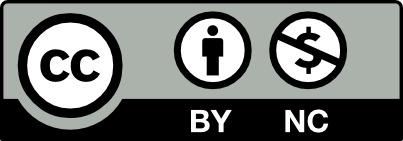An Economical -Technical Comparison of Solar Electrical Water Pumping System Versus Conventional Electrical Water Pumping System for Agricultural Purposes in the Area of “Awjila”
DOI:
https://doi.org/10.51646/jsesd.v5i1.71Keywords:
ضخ المياه , منظومات فوتوفولتية , طاقة شمسية، زراعية , معدلات التدفق , مضخة غاطسةAbstract
This paper presents a simplified comparison to show the economic feasibility of the use of solar pumps versus conventional pumps in dripping-based cultivation, such as vegetables and palm trees, especially in the agricultural area of Awjila. Some technical
specifications of two models of solar pumps with two different capacities - large and small were compared. Also compared the effect of was the productivity of the two pumps on the effectiveness of desired coverage of irrigation plans intended to palm trees and vegetables.
A direct comparison was made also between the traditional pumping costs and the solar pumping of agricultural water in a particular case of a well located 500 meters from the line of conventional AC power supply. In this paper, we relied on a computer program approach using a trusted specialized code made by an international company manufacturing water pumps operating mainly on solar energy technology. Depending on the extrapolation and digital simulation of the processes for agricultural irrigation; solar water pumping technique recorded very high techno-economical performance rates over the traditional
electrical pumping. Satisfactory results were obtained for water flows that suggest the use of smaller solar pumping systems and lowest-cost over the larger systems in the case under consideration and the like. The results have shown that solar systems have a prominent economic advantage over conventional systems in the medium and long-range. In general results of this research, have proven, that where water is generally available, it can successfully and at high economic feasibility benefit from the tremendous solar energy potential and its equipment in the promotion of productive long term agriculture anywhere even if is not far
from the traditional transmission lines of electric power. And as solar pumping technique provides is beneficial for job opportunities, agricultural, industrial and human investment, and sustainable development in many of the same regions; they need support by a set of policies, laws, facilities with financial incentives leading to the realization of this vision within the economic feasibility conditions, and including the provision of funding and market activation with human habilitation. countries through dividing them into oil-producing countries and non- oil-producing ones. In the third axis, tools of econometrics are used to predict the international trend and that of the Arab countries, both oil and non-oil to renewable energy. The last part estimates the standard model about the possible impact of moving energies on economic growth rates in Arab countries. The study concluded that the growing renewable energies will be different in the constituent countries of the study sample, in addition to the weak impact of the move towards renewable energies on economic growth in the Arab countries.
Downloads
Metrics
References
-IBRAHIM M. SALEH» PROSPECTS OF RENEWABLE ENERGY IN LIBYA”, International Symposium on Solar Physics
and Solar Eclipses (SPSE) 2006.
-Müller-Steinhagen Hans, “Technical Workshop on Concentrating Solar Power CSP”, Institute of Technical Thrmodynamics German Aerospace Center (DLR), Weec2006, Tripoli –Libya.
-Azzain Gassem, “Dynamic Simulations of Complex Domestic Solar Energy Systems with Thermal Storage lternatives”, Ph.D. Thesis, ITC, MEiL, PW, Warsaw University of Technology, 2007, Warsaw – Poland.
-Azzain Gassem, “Generation of First Typical Meteorological Year (TMY) for Sebha City”, Bulletins of Institute of Heat Engineering (IHE), 2003, Polytechnic Warsaw (PW). Poland.
-I. M. Saleh Ibrahim Al-Jadi*, M. A. EKhlat**, N. M. Krema** “PHOTOVOLTAIC IN LIBYA APPLICATIONS AND EVALUATION”, Proceedings of the International Conference on Renewable Energy for Developing Countries-2006.
-Ezzeddin S. Aburas, “ National Energy Statistics Libya” Ministry of Electricity and Renewable Energy, General Electrical Company of LIBYA ( GECOL ), Muscat, Oman Mar. 2014.
-Issa Atawaijr, “Renewable Energies in Libya Reality and the Future,” World Renewable Energy and Environment Conference , (WREEC-2006). Tripoli, Libya.
- “Solar Water Pumping for Irrigation in Oujda - Morroco., Case Study”, 05.01.2013 . Lorentz company. Siebenstücken 24 - 24558 Henstedt-Ulzburg.
-Softare “Lorentz COMPASS 3.1.0.44, Solar Pump System Planner”. Bernt Lorentz GmbH & Co. KG.
-Data source: Monthly average insolation values from NASA Langley Research Center Atmospheric Sciences Data Cenrer POWER Project. Hourly values by the time-dependent autoregressive Gaussian model of Aguiar and and Collares-Pereira.
Awjila ) جمعية أوجلة الزراعية( , Lali .H Imraga-[11] Agricultural Association, Nov. 2013.
Downloads
Published
How to Cite
Issue
Section
License
Copyright (c) 2021 Solar Energy and Sustainable Development Journal

This work is licensed under a Creative Commons Attribution-NonCommercial 4.0 International License.














